 Carter Horsley
Carter HorsleyJun 09, 2018
Carter's Review
This very handsome and robust Beaux-Arts style building at 131 Fifth Avenue between 19th and 20th streets was erected in 1903 for Lord & Taylor, the department store, and designed by Israels & Harder for the estate of James A. Roosevelt. The same architects designed the cast-iron, neo-Renaissance-style building at 4 East 20th Street for the same client and tenant.
After the store moved further uptown on the avenue in 1915, it was converted to loft space and showrooms and in 1979 the buildings were converted to 23 residential co-operative apartments with an entrance at 4 East 20th Street.
Bottom Line
A distinguished mid-block commercial building that was converted in 1979 to 23 co-operative apartments, many with high ceilings and unusual layouts, and the building has a robust and striking mid-section of paired arched, multi-paned windows with segmental enframements that is close to Madison Square and Gramercy Parks and the many restaurants, boutiques and good public transportation of the Flatiron District.
Description
The mid-block, 45-foot-wide building is faced with orange brick, limestone and terra cotta and shares a common roofline with the 1899 building designed on the corner at 20th Street by Robert Maynicke at 133 Fifth Avenue.
According to the 1989 designation report of the Ladies Mile Historic District, "the top three stories of 129-131 Fifth's façade seem to have been designed to harmonize with that building."
"...The second through seventh stories," the description continued, "are articulated by pairs of superimposed giant segmental arches with keyed terra-cotta surrounds, each rising two stories. As the arches ascend they diminish in height, and their enframements become less elaborate. The enframements for the second and third story-grouping have limestone pedestals, long narrow keyed blocks, and elaborate console keystones. Within the arches, steel mullions and iron spandrels provide a three-bay frame for wood-framed windows. These create a tripartite arrangement with paired sash windows in the wider center bays and single sash windows in the outer bays. At the second floor the top sashes are extended by horizontal panes held in place by wood cross bars. All the windows are topped by wood-framed transoms - on the second story and in the center bays of the third story these are side-pivoting; the curved transoms are butted at the bottom. This story is topped by a dentiled terra-cotta molding resting on a dentiled brick course....
"In the fourth-fifth story grouping the arches have console keystones and 256 Fifth Avenue Between East 20th Street and East 21st Street (East Side) continuation of . . .No. 129-131 Fifth Avenue square keyed blocks with a vermiculated finish....In the sixth-seventh story grouping, the arches have cartouches in place of keystones and square key blocks with paneled faces. The arrangement of windows is identical to that of the fourth-fifth stories. The terra-cotta molding crowning this story aligns with the eighth-story cornice at 133 Fifth.
"On the eighth story the attempt to relate to Maynicke's design seems apparent both in the placement of cornices and in the use of similar arched window openings. Here the arches have flat buff-colored terra-cotta surrounds. One-over-one wood-framed window sash are employed.
"The building is crowned by a galvanized iron Corinthian cornice resting on a terracotta molding. A detailed drawing filed with the New Building Application (copy available in LPC files) provides information regarding the colors to be used for this façade. While the drawing varies somewhat from the design as executed, it probably reflects original conditions in specifying that the crowning cornice was to be painted to match the limestone trim, that the terra-cotta moldings were to be a limestone-colored-buff, that the wood window frames and sash were to be painted black, and that all the metal except the main cornice and ground story bronze fittings were to be painted vertigris green. The drawing also indicates that there were elaborate wrought and hammered iron railings shielding the second-story windows.
"The building's 100-foot wide brick eastern elevation steps back over a one-story extension measuring about thirty feet by seven feet that adjoins the rear yard of 125-127 Fifth Avenue. Towards Fifth Avenue this wall is punctuated by three rows of double-hung sash windows with single-leaf metal shutters; a faded mural advertises Justin Tharaud China and Earthenware, a long-time tenant in the building. Over the court there are two rows of triple-sash windows. A recent stuccoed one-story addition above this section of the building is topped by a roof garden. The building's T-shaped rear wall is partially visible from 20th Street. Thirty-eight feet wide, it is faced with brick which has been painted a light gray. This wall has no windows and no applied architectural decoration."
Amenities
The building has some fireplaces, a full-time superintendent, keyed elevators, video intercom and is pet-friendly.
Apartments
Some apartments have 18-foot-high ceilings and 10-foot-high windows and cast-iron columns and some private terraces.
Penthouse 803 is a two-bedroom unit with a 9-foot-long entry foyer that leads to a 39-foot-long living/dining room with a wood-burning fireplace, a 12-foot-long kitchen with a breakfast bar, an 11-foot-wide office and, upstairs, a 19-foot-long master bedroom with a 42-foot-long roof terrace.
Apartment 301 is a three-bedroom duplex unit with an entry foyer that leads to a mostly double-height, 28-foot-long living room with a wood-burning stove across from the open 11-foot-wide kitchen and an 11-foot-wide dining area. The foyer is also next to a 10-foot-wide den and a staircase to the upper level with the bedrooms.
Apartment 601 is a one-bedroom unit with an entrance directly into its 41-foot-long great room that has an open, 11-foot-wide kitchen and is surrounded by a 26-foot-wide master suite, an 11-foot-long library with wine cellar, an 8-foot-wide windowed office, an angled, 13-foot-wide den, a 13-foot-wide sun room with a screened porch and a 29-by-23-foot terrace.
Apartment 501 is a two-bedroom duplex unit with a small entry foyer that opens onto a 14-foot-long, partially double-height gallery that leads to a 22-foot-long living/dining room with an angled wood-burning fireplace and a 14-foot-long den and a 17-foot-long bedroom with a small balcony on the main level and a 21-foot-long master bedroom with a skylight bathroom and a large terrace.
Apartment 101 is a two-bedroom duplex with an entry to a 28-foot-long dining room next to an enclosed 9-foot-wide kitchen and a 17-foot-wide living room. The entry is also off an office space with a staircase to the upper level with two bedrooms.
History
According to the landmark district designation report, "This building occupies the site of two converted dwellings which housed fashionable dressmakers in the 1880s and 1890s."
"In 1902," the report continued, "the site was acquired by the Estate of James A. Roosevelt for an extension to the Lord & Taylor department store. This was the third expansion of the store on to Roosevelt property; in 1890 it had leased a commercial building on the site of the James A. Roosevelt house at 6 East 20th Street, and in 1900 it had an addition to that building erected on the site of the S. Weir Roosevelt house at 4 East 20th Street. No. 129-131 Fifth opened directly into 4 East 20th and its first five stories were built on the same level with the 20th Street buildings. This new addition seems to have been spurred by the firm's decision to close the old Lord & Taylor store building at Grand and Chrystie Streets which had continued to operate long after that neighborhood ceased to be fashionable. In commenting on the new building, the New York Press called Lord & Taylor "a pioneer" that enjoyed "the distinction of being the first in its line of trade to have an entrance in Fifth Avenue - a street that experts say will be eventually 'the' shopping street of this city." (An earlier addition on Fifth Avenue to the Arnold Constable store to the south was used for that firm's wholesale trade and business offices.) In 1915, following Lord & Taylor's move uptown, the building's upper floors were converted to showrooms and lofts. Still linked to 4 East 20th Street, it was sold to importer Ernst Koscherak in 1923. From the 1920s through the 1940s most of the tenants of the two buildings were dealers in china and glass. In 1979, the buildings were converted to residential use with the entrance to the apartments located at 4 East 20th Street."
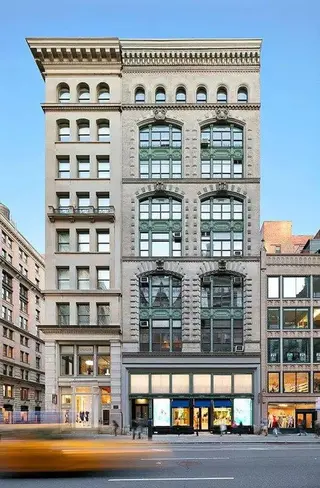
- Co-op built in 1904
- Located in Flatiron/Union Square
- 23 total apartments 23 total apartments
- 10 recent sales ($1.2M to $4M)
- Pets Allowed
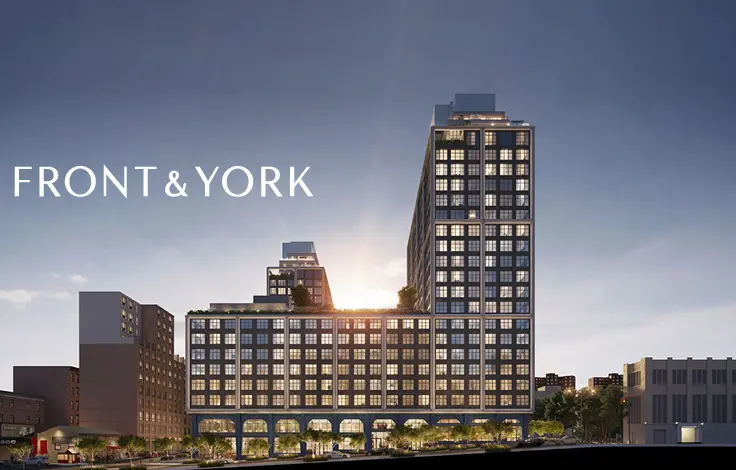
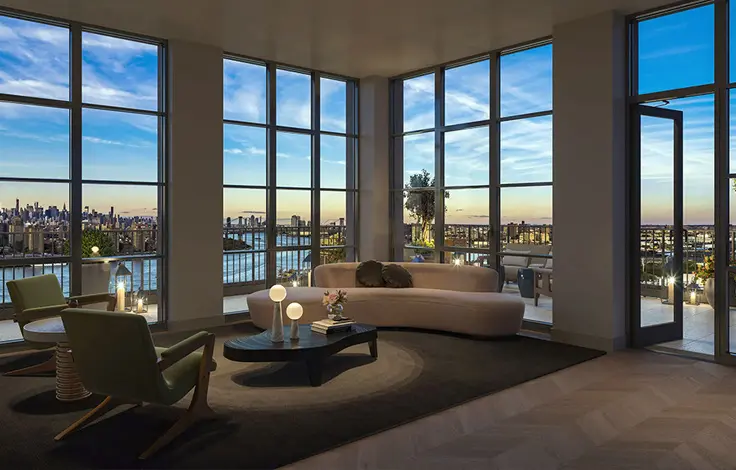

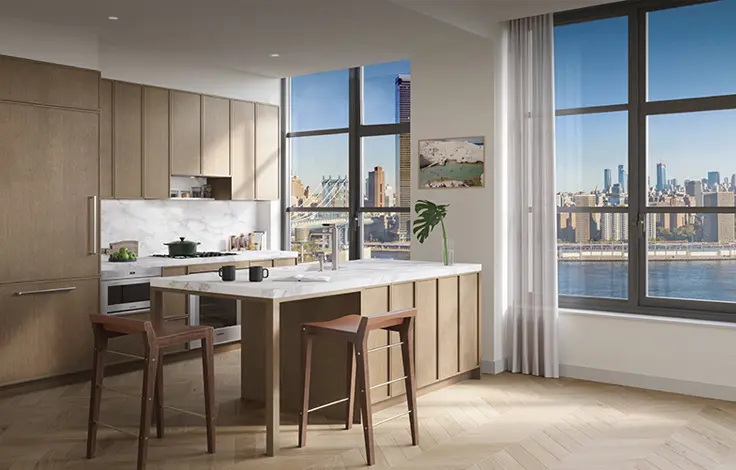
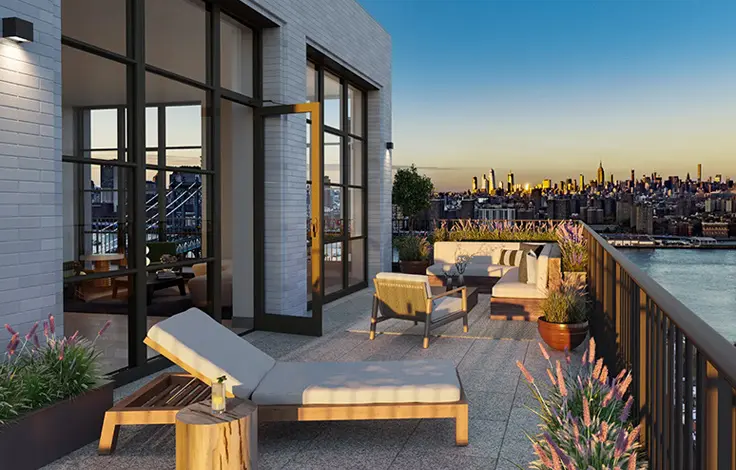
 6sqft delivers the latest on real estate, architecture, and design, straight from New York City.
6sqft delivers the latest on real estate, architecture, and design, straight from New York City.
